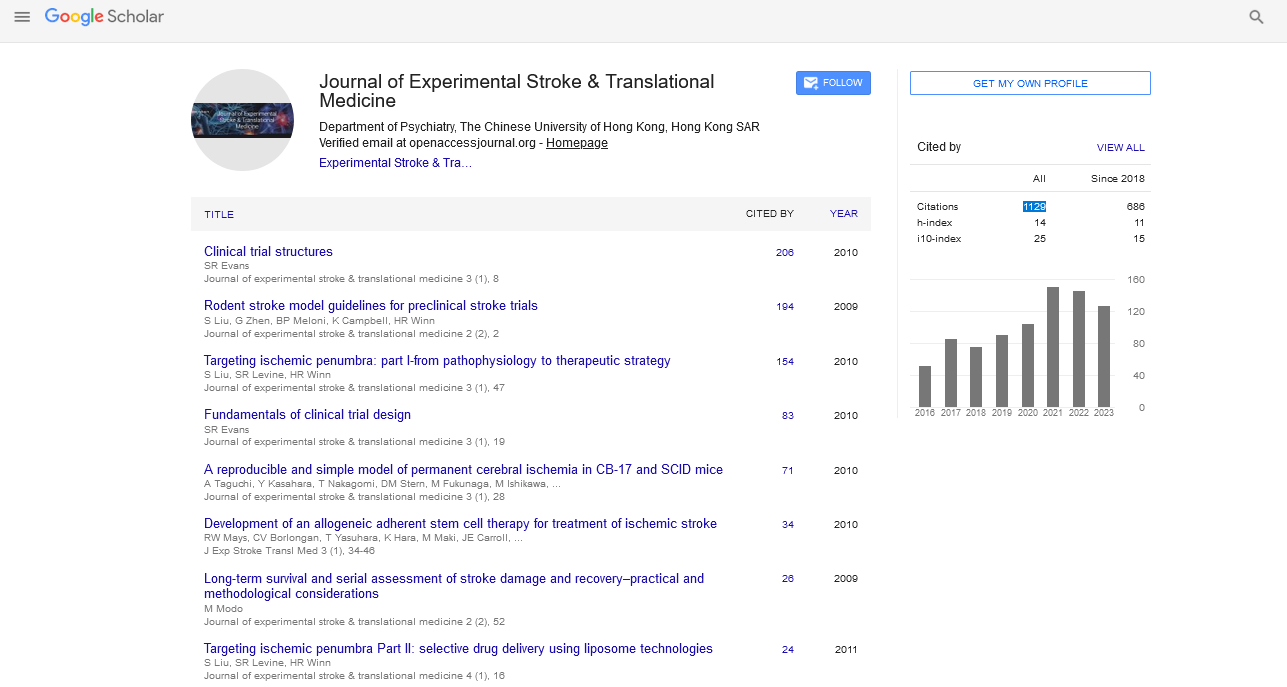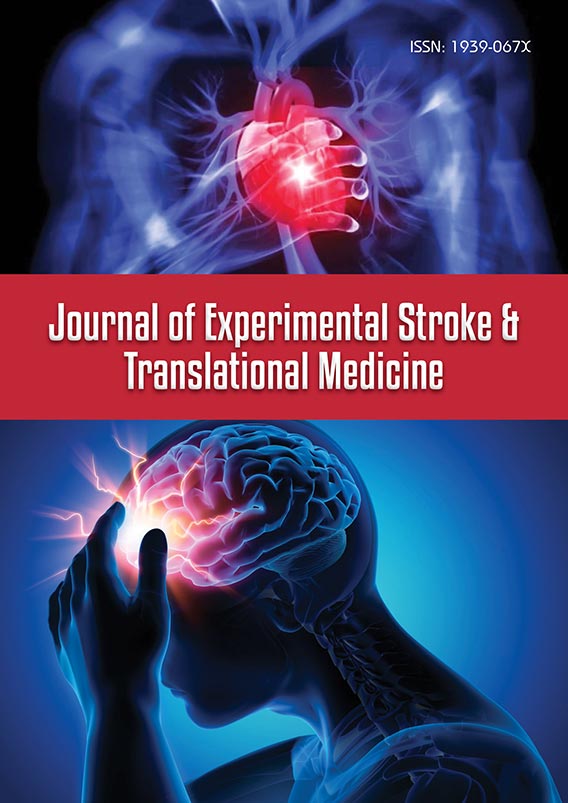Perspective - Journal of Experimental Stroke & Translational Medicine (2025) Volume 17, Issue 1
In Harmony against Stroke: The Symphony of Combination Therapies in Diagnosis
Kapetu Satyamorthy*
Department of Neurology, University of Delhi, Delhi, India
- *Corresponding Author:
- Kapetu Satyamorthy
Department of Neurology, University of Delhi, Delhi, India
E-mail: ksatamorthy@manipal.edu
Received: 27-Nov-2023, Manuscript No. JESTM-23-121189; Editor assigned: 29-Nov-2023, PreQC No. JESTM-23-121189 (PQ); Reviewed: 13-Dec-2023, QC No. JESTM-23-121189; Revised: 14-Feb-2025, Manuscript No. JESTM-23-121189 (R); Published: 21-Feb-2025, DOI: 10.37532/JESTM.2025.17(1).297-298
Introduction
In the dynamic field of stroke diagnosis, the approach to understanding and managing this complex condition has evolved significantly. No longer confined to singular diagnostic methods, a symphony of combination therapies has emerged, orchestrating a multifaceted approach to comprehensively assess and treat strokes. This article delves into the realm of combination therapies for stroke diagnosis, exploring the synergies and advancements that have revolutionized our understanding of this critical medical condition.
Description
The complexity of stroke diagnosis
Stroke, often referred to as a “brain attack,” requires swift and accurate diagnosis for optimal intervention and improved patient outcomes. The traditional diagnostic toolkit, including clinical assessments and imaging techniques, has been enhanced by the integration of multiple modalities, giving rise to combination therapies that offer a more nuanced and comprehensive understanding of stroke pathology.
Multimodal imaging: A comprehensive perspective
At the forefront of combination therapies for stroke diagnosis is multimodal imaging, a holistic approach that combines various imaging techniques to paint a comprehensive picture of the brain. This integration goes beyond merely capturing structural abnormalities, encompassing functional and perfusion information to provide a more nuanced view of the stroke’s impact.
CT and MRI fusion imaging: Merging strengths
Combining the strengths of Computed Tomography (CT) and Magnetic Resonance Imaging (MRI) through fusion imaging has become a powerful tool in stroke diagnosis. This approach allows clinicians to leverage the rapid acquisition capabilities of CT for initial assessments and seamlessly transition to the detailed soft tissue visualization offered by MRI. The fusion of these modalities enhances the accuracy of diagnosis, particularly in complex cases where both speed and precision are paramount.
CT perfusion and CT angiography: Mapping blood flow
Combining CT Perfusion imaging (CTP) with CT Angiography (CTA) forms a dynamic duo in mapping blood flow in the brain. CTP reveals regions of altered blood perfusion, indicating potential ischemic areas, while CTA provides a detailed view of the cerebral vasculature, helping identify the source of vascular compromise. Together, they offer a comprehensive evaluation of the hemodynamic status of the brain, guiding decisions on reperfusion therapies.
MRI: The multifaceted approach
Within the realm of magnetic resonance imaging, the combination of Diffusion- Weighted Imaging (DWI) and Perfusion- Weighted Imaging (PWI) stands out. DWI captures microscopic changes in tissue water diffusion, identifying early ischemic regions, while PWI maps cerebral blood flow, aiding in the determination of salvageable tissue. The synergy between DWI and PWI allows for a more nuanced evaluation of the stroke’s impact and informs treatment strategies.
Ultrasound and transcranial Doppler: A window to blood flow
Combining ultrasound imaging with Transcranial Doppler (TCD) ultrasound offers a non-invasive window into cerebral blood flow. This combination enables clinicians to assess the velocity and direction of blood flow in the major vessels supplying the brain. Particularly useful in detecting emboli and assessing collateral circulation, this approach contributes valuable information to the overall diagnostic landscape.
Emerging technologies: Artificial intelligence and machine learning
The integration of Artificial Intelligence (AI) and Machine Learning (ML) algorithms adds a layer of sophistication to combination therapies for stroke diagnosis. These algorithms analyze vast datasets from various imaging modalities, identifying patterns and predicting outcomes with remarkable speed and accuracy. The collaborative intelligence of these technologies enhances the diagnostic process, aiding clinicians in making informed decisions based on a wealth of data.
Clinical assessment and biomarkers: Bridging the gap
While imaging technologies play a pivotal role, the integration of clinical assessments and biomarkers further enriches combination therapies. Neurological examinations, patient history, and blood-based biomarkers contribute essential information to the diagnostic symphony, helping refine the understanding of stroke etiology and guiding personalized treatment plans.
Challenges and considerations
Despite the promises and advancements, challenges persist in the realm of combination therapies for stroke diagnosis. Standardization of protocols, accessibility to advanced imaging technologies, and the need for specialized expertise in interpreting complex multimodal data are among the ongoing considerations. Addressing these challenges is crucial for ensuring the widespread adoption and effectiveness of combination therapies in diverse healthcare settings.
Conclusion
The symphony of combination therapies for stroke diagnosis reflects a transformative shift in the approach to understanding and managing this complex condition. From the fusion of CT and MRI for rapid and detailed imaging to the integration of AI for data analysis, these combination therapies offer a holistic and nuanced perspective on stroke pathology. As technology continues to advance and interdisciplinary collaboration deepens, the symphony of combination therapies will likely play an increasingly pivotal role in reshaping the landscape of stroke diagnosis, ultimately leading to more precise interventions and improved outcomes for patients facing this critical medical condition.

